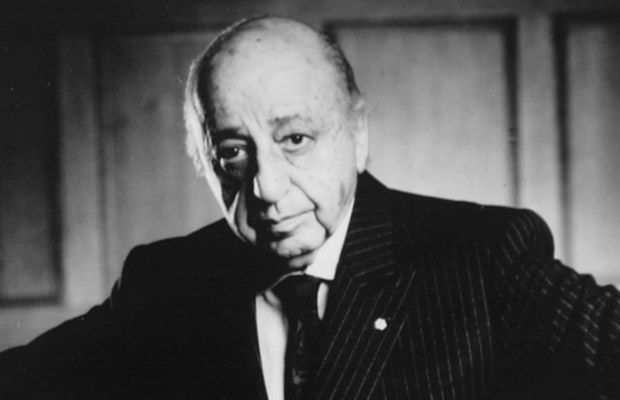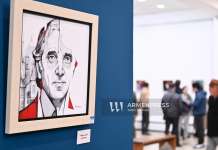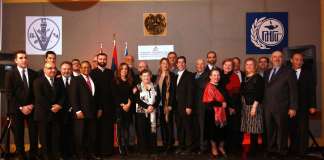The capital will soon receive a sculpture of another Ottawa icon — this time, Yousef Karsh. A bronze and granite likeness of the beloved Armenian-Canadian photographer, who has been called one of the great portrait artists of the 20th century, will be unveiled in June, at its permanent location in front of the Château Laurier hotel.
The project came about shortly after Armenian Ambassador Armen Yeganian and his wife, Maria, arrived in Ottawa more than five years ago.
“When we arrived in Ottawa, we met Estrellita Karsh, the widow of Youssef Karsh,” Yeganian said. “And, of course, we were familiar with the work of this famous photographer so we had a very nice visit over lunch, then she showed us the suite at the Château Laurier, where they lived for 18 years.”
After the lunch, Yeganian and his wife were chatting about Karsh, who died in 2002, and his legacy and decided he provided a nice bridge between the two cultures.
“From that moment, we thought it would be nice to have something that reminds people about Yousef Karsh in the nation’s capital,” the ambassador said. “He is beloved, everyone knows him, especially in Ottawa. In the Speaker’s office on Parliament Hill, there’s Karsh’s portrait of Winston Churchill, so it’s all here, but there’s nothing to commemorate him.”
Maria Yeganian suggested pursuing the idea of having a statue of Karsh somewhere in the city. About two and a half years ago, the envoys started discussing the idea with the Karsh Foundation, Château Laurier employees and officials from Heritage Canada and the National Capital Commission. The NCC owns the land where they proposed to put the work.
“That’s when the work started and it intensified a year ago because we wanted to leave a gift from the grateful Armenian people to the people of Canada on the occasion of the 150th anniversary of Canada, and on the 25th anniversary of diplomatic relations between Canada and Armenia.
The sculpture is a likeness of the artist who is holding his large-format square camera in hand while the stand for it is in the shape of a tripod. Armenian-Canadian sculptor and artist Megerditch Tarakdjian, whose work appears at the Armenian embassy, donated his time and the materials for the project and the ambassador headed up a fundraising team that secured donations from private sponsors and public organizations.
“He was a big man, and I admired him, and when I read his biography, I was even more impressed,” Tarakdjian said. “He was a big person with a big heart and pride for Canadians and the Armenian community here, too. When they approached me and asked me if I could work on this, I said ‘Of course.’”
Tarakdjian is a family physician in Montreal by day, but he works a four-day week and saves Friday and the weekend for his art. Regarding his generous donation of the Karsh statue, he said: “I think we have to give back to the community.”
The ambassador expressed similar thoughts.
“We have such good relations with Canada,” Yeganian said. “Canada was such a big protector of human rights and it recognized the genocide on so many occasions and our countries have great relations within the Francophonie. So this is a little token of appreciation — a gesture — from the Armenian people to the people of Canada; it’s from people to people.”
Yeganian said he had no problem convincing officials at the federal level that this was an important addition to Ottawa’s spate of statues, nor was it difficult to secure the highly desirable location. “Everybody agreed it was something that was missing,” he said. “It takes time for all the permissions, but it was a good experience overall.”
The ambassador’s posting in Canada will soon be over, but he expects to be here to see the statue unveiled in June.
Jennifer Campbell, a New Brunswick native, is the editor of Diplomat magazine (diplomatonline.com). She lives in downtown Ottawa with one husband, two cats and more than 100 works of art.














